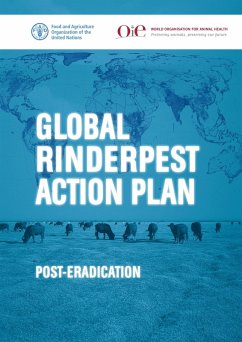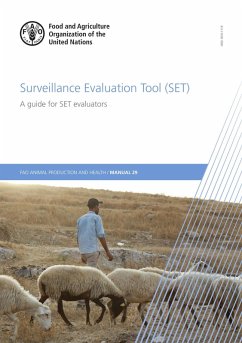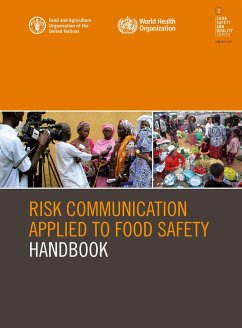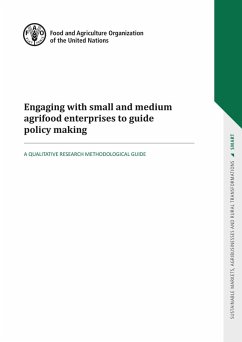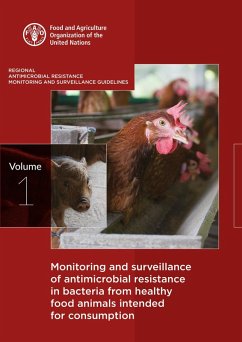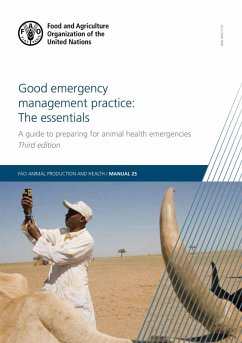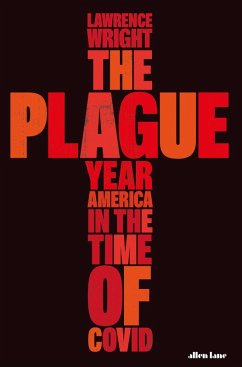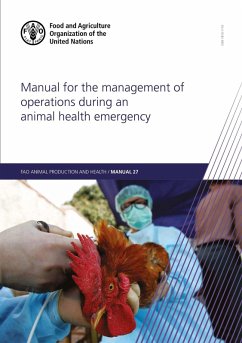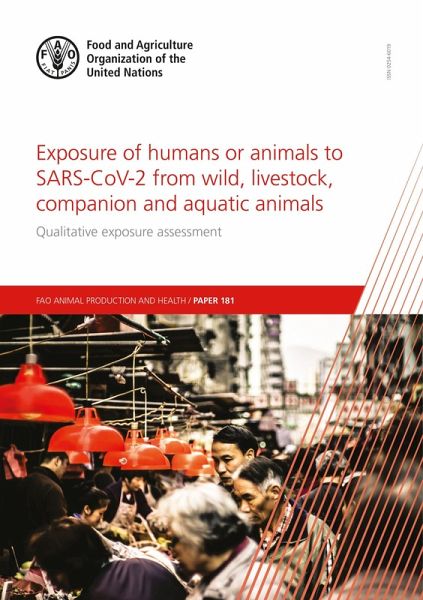
Exposure of Humans or Animals to Sars-Cov-2 from Wild, Livestock, Companion and Aquatic Animals: Qualitative Exposure Assessment (eBook, ePUB)

PAYBACK Punkte
0 °P sammeln!
Understanding the risk of exposure of humans or animals to SARS-CoV-2 from animals and their products is essential for containing virus spread, prioritizing research, protecting food systems, and informing national One Health investigations and mitigation measures. This Qualitative Exposure Assessment provides a comprehensive review of available scientific evidence and assessment of exposure risk from different wild or domestic animal species. Results can inform country-level risk assessment and provide the evidence base for targeted SARS-CoV-2 investigations in animals and mitigation options....
Understanding the risk of exposure of humans or animals to SARS-CoV-2 from animals and their products is essential for containing virus spread, prioritizing research, protecting food systems, and informing national One Health investigations and mitigation measures. This Qualitative Exposure Assessment provides a comprehensive review of available scientific evidence and assessment of exposure risk from different wild or domestic animal species. Results can inform country-level risk assessment and provide the evidence base for targeted SARS-CoV-2 investigations in animals and mitigation options. This publication provides: I. assessment of the risk of human or animal exposure to SARS-CoV-2 through contact with, handling or consumption of wild, domestic and aquatic animal species or their products; II. identification of current knowledge gaps regarding the zoonotic origin or animal-human spillover of SARS-CoV-2 and recommendations on priority studies; III. summary of available evidence for SARS-CoV-2 susceptibility of different animal species; IV. evidence-based recommendations on how to prioritize animal species for targeted field investigations or research studies; V. recommendations for targeted One Health investigations and epidemiological, laboratory, anthropological or seasonality studies to fill critical knowledge gaps evidenced by this exposure assessment.
Dieser Download kann aus rechtlichen Gründen nur mit Rechnungsadresse in A, B, CY, CZ, D, DK, EW, E, FIN, F, GR, H, IRL, I, LT, L, LR, M, NL, PL, P, R, S, SLO, SK ausgeliefert werden.




